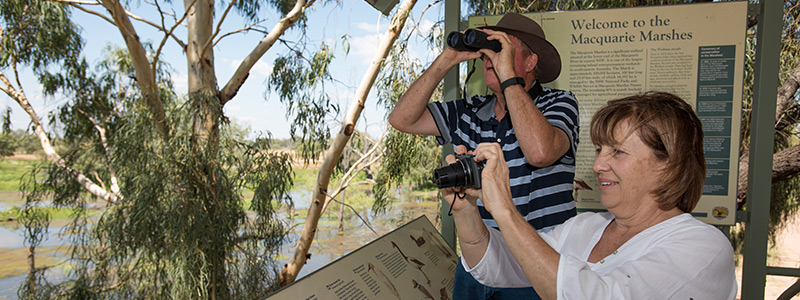
State of the Environment
Council, in collaboration with the Central West Catchment Management Authority and all other Councils within the catchment have put together a Regional State of the Environment Report for all Local Government Areas in the Catchment.
What is a State of the Environment Report?
A local State of the Environment Report (SOE) is a document that provides a summary of the attributes of the local government environment and human impacts on the environment. It also provides a public record of the activities of the government (all levels), industry and the community in protecting and restoring the environment.
Local SOEs do not stand alone, and when integrated into Council planning and management cycles can:
- Provide the public, government and other decision makers with regular, scientifically sound information about the condition of the environment;
- Report on the effectiveness of policies and programs developed in response to environmental change, including highlighting the cumulative effects of individual projects and environmental pressures across catchments or the local areas;
- Assess progress towards achieving environmental standards and targets and ecological sustainability;
- Provide input into the development of long term, ecologically sustainable economic and social policies by all levels of government through integrating environmental information with social and economic information;
- Identify current and emerging environmental issues and important gaps in knowledge and data collection, and;
- Raise community awareness and understanding of their local environment and the contribution individuals make to environmental problems through their use of resources such as energy, water and production of waste. (State of Environment Guidelines 1999).
Why do Councils have to submit a SOE?
Under Section 428 of the Local Government Act 1993, Councils are required to supply annual reports within 5 months of the end of the financial year, with one including a report as to the state of the environment in the area, and in particular in relation to the following environmental sectors:
- Land,
- Air,
- Water,
- Biodiversity,
- Waste,
- Noise,
- Aboriginal Heritage,
- Non-Aboriginal Heritage,
with particular reference, with regard to each such environmental sector, to:
- management plans relating to the environment,
- special council plans relating to the environment,
- the environmental impacts of council activities.
Additionally, there are two types of SOE, namely comprehensive and supplementary.
Comprehensive SOE
Councils must prepare a comprehensive SOE every four years, or for each financial year following the election of councillors. A comprehensive SOE serves to:
- Address the eight environmental sectors of land, air, water, biodiversity, waste, noise, Aboriginal heritage and non-Aboriginal heritage;
- Provides for each environmental sector, as a basis of comparison in subsequent reports, a statement outlining the condition of the sector at the date of the report and makes the relevant comparison with the equivalent statement in the last (comprehensive) SOE report;
- Reports on all major environmental impacts and related activities, including management plans relating to the environment; special council projects relating to the environment; and the environmental impact of council activities.
Supplementary SOE
A supplementary report is to be prepared when a comprehensive is not required. A supplementary report serves to:
- Identify any new environmental impacts since the Council’s last SOE, and;
- Update the trends in environmental indicators that are important to each environmental sector. Find out more by downloading the report below.
